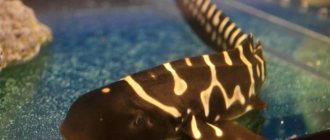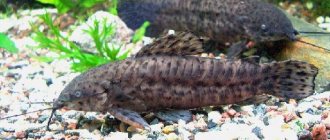Buying a Yellow-bellied Turtle
When buying a reptile at a pet store or market, it is recommended to take it to a veterinarian for examination. This is necessary to determine the general condition, whether there are diseases, and to look for the presence of injuries.
If you already have sea turtles at home, and you purchased another one, then the new one must be kept separately for 90 days. It is also impossible to keep adults and small ones in the same place, this can lead to injury to the latter. Only turtles of approximately the same size are kept together.
After changing its place of residence, the turtle behaves inhibited or, conversely, actively. During this period, you must not disturb her, but do not forget to feed her.
How to handle it correctly
When a person wants to pick up a turtle, it is recommended to remember that it is wet and slippery. She doesn’t like these manipulations, so she hisses, can scratch, since she has large claws, and is even capable of biting. Therefore, the pet must be held with both hands at the same time.
After spending time with the reptile, you need to wash your hands with hygiene products, since it is a waterfowl and has its own microflora. It is necessary to ensure that the food and water in the container are fresh. Turtles spread salmonella. Therefore, it is forbidden to wash the reptile in the kitchen sink and its accessories too.
Caring for a turtle
Sea turtles require water and land. Therefore, the first thing to do is purchase an aquarium with a volume of at least 150 liters. If the reptile is small, then it grows relatively quickly. Because of this, it is recommended to buy a container “for growth”. Water is poured so that there is enough for the pet to swim and turn over.
An island of sushi is placed in the aquarium; it is sold in a specialized store. The pet will periodically crawl out and bask under the installed lamp. The temperature on land exceeds water temperature by 10 degrees. The island should occupy a quarter of the aquarium in area. But exceeding the temperature regime on the island is unacceptable. This will lead to overheating, which means maintenance will not be performed properly.
Requirements for the island:
- one side of the land should be immersed in water, that is, half-flooded;
- position the land so that the reptile does not get stuck between the glass of the aquarium and the side of the land;
- made of safe materials;
- stayed well on the water so that the pet could not turn it over;
- textured surface.
Red-eared aquarium turtle: features and conditions of detention
Pond slider
Most often among our compatriots in turtle aquariums you can find the marsh, snake-necked, and red-eared turtles. These types of species are common among lovers of these animals. Aquariums for red-eared turtles are especially popular in pet stores. This aquarium turtle is popular due to its easy care and its bright colors. These animals grow quite quickly. It takes only five years for the shell of a small turtle to reach 30 centimeters in diameter.
How long do red-eared turtles live in an aquarium? At home, they live quite a long time - at least 30 years. However, for this they need proper care. Males have a long tail, wide at the very base, but females cannot boast such an impressive tail. It is enough to look at the photo to determine another characteristic feature inherent in males - long claws on the front paws.
How to heat an island
Turtles love to bask on the sand under the sun's rays. This should be done at home, only instead of the sun there will be a lamp. The reptile feels good when the temperature of the shell under the lamp is 30–35 degrees. To monitor this parameter, you must place a thermometer. If the thermometer readings exceed the norm, the pet may get burns. We must not forget that if there is more than one turtle in the aquarium, they love to climb on top of each other. This makes it dangerous to get close to a heat lamp.
When diving, your pet splashes drops in different directions. They can get on a working lamp, as a result, it will burst. This means that the lamp is positioned in such a way as to exclude all these moments.
Types of small turtles for home keeping
Small turtles are those that, even as adults, do not reach a length of more than 12 centimeters. If a turtle has a body length of more than 15 centimeters, it is already classified as a medium-sized pet, and it needs a special move. All other turtles (up to 15 centimeters) belong to the mini category. However, you must be aware that if you buy a small turtle, then in childhood it may only be a few centimeters long, while over time it will definitely grow a little. This is a natural process and you must be prepared for it - perhaps in a couple of months you will have to buy a larger aquarium to comfortably keep your aquatic pet.
Flathead or flat-bodied turtles
This is what flat turtles look like
The body length of an adult can reach 8-9 centimeters, and the weight can be 100-200 grams. A small aquarium will do to keep these little ones, and the fact that these turtles feed on succulent plants, which contain a lot of moisture, makes caring for them a simple task, even a child can do. This is one of the unpretentious types of mini turtles, which can be recommended even to novice turtle keepers. Read more about what turtles eat.
Locking turtles
This is what shuttered turtles look like
In nature, these creatures live in Africa, Mexico and America. There are 4 known subspecies of these turtles, but the Sonoran and yellow turtles are more popular. They reach sizes of up to 13 centimeters in adulthood. But striped and mud turtles grow a little smaller - up to 11 centimeters.
Musk turtles
This is what musk turtles look like
Excellent candidates for the role of a pet. As adults, they rarely grow longer than 15 centimeters. Moreover, 4 types of them are also known. Representatives of each species differ in their color and size. Sternotherus depressus is considered to be the smallest - the size of an adult does not exceed 11 centimeters.
Spotted turtles
This is what spotted turtles look like
These turtles cannot be classified as completely aquatic creatures, as they do not mind getting out and being on land for a while. So, they are half aquatic, half land creatures, and for them to live comfortably in your home, you will need to take care of an aquarium terrarium that could provide them with a habitat convenient for them, providing both a piece of land and an artificial pond. Fortunately, the size of an adult turtle is no more than 13 centimeters, so there is no need to equip a very large house for them.
Three-keeled Chinese turtles
This is what three-keeled Chinese turtles look like
On average, the body length of an adult does not exceed 13 centimeters. Attractive appearance, unpretentiousness in terms of maintenance requirements, calm character - all this turns these creatures into favorites of turtle keepers, and especially those who do not have much experience in keeping turtles.
Water requirements
The red-eared turtle is a waterfowl reptile. She feeds, defecates, and sleeps in water. Therefore, water should always be clean and fresh. Dirty food causes discomfort to the pet and is a source of disease.
The lowest water level in a container is measured by the size of its shell. She should calmly roll over onto her stomach if she ends up on her back. But the declared level is the lowest. Ideally, more water is recommended, then it stays clean longer.
When changing water, it must be left for 24 hours. It is important to ensure that the water does not drop to 20 degrees, but is between 22–28 degrees. If it is necessary to heat the water, install a heater. The water temperature is controlled using a thermometer.
Since the pet performs all its physiological needs in the aquarium, the water becomes dirty and smells unpleasant. To avoid this, change the water once every 7 days. To perform this procedure less frequently, you need to install a filter. The internal filter does not cope with water after the turtle, it is weak. Of course, you can buy an external filter, it fits perfectly, but its price is not cheap.
Aquarium for red-eared turtles
Choosing an aquarium
When choosing the size and type of aquarium, it is necessary to take into account the dimensions of an adult animal and the characteristics of its body. Red-eared turtles spend a lot of time underwater or at the bottom of an artificial reservoir, where they feel safe.
The volume of the aquarium is selected depending on the size and number of turtles. For one turtle 13 cm long or a pair of young individuals 10 cm long, a 100-liter aquarium will be enough. As the container grows, it is replaced with a larger one. So, for a pair of turtles 20-30 cm long, you will already need a two-hundred-liter aquarium. If the volume is too small, the water becomes contaminated faster, which leads to red ear disease. The distance from the water level to the top edge of the aquarium should be at least 15-20 cm.
The red-eared slider is a swimming reptile. In addition to water, it vitally needs land on which it basks and receives an ultraviolet tan. The recommended size of the land area is at least 25% of the total area of the aquarium. It is advisable to firmly attach the island to the base of the container.
The container should be equipped with a lid so that pets cannot move it and get out, but at the same time it allows air to pass through well.
How to equip an island?
Temperature
Filtration
Lighting
Ultraviolet
Aquarium decoration
The main principle of choosing decorations is safety. Do not use items made from environmentally hazardous materials or with sharp corners or edges.
The soil for the bottom should not be very fine, as turtles can sometimes swallow it. Also, fine soil quickly becomes contaminated and is difficult to clean. It is better to use pebbles with a fraction of 5-6 cm.
For young turtles, you can plant green plants and introduce fish. Adults do not need soil, and they can eat or damage plants and fish.
In an aquarium with red-eared turtles, artificial plants made of plastic or silk would be appropriate. They are secured in the ground using weights. You can also install artificial vines on the islands.
To decorate the terrarium, you can use a variety of driftwood, grottoes, unusual stones and other elements. The driftwood should not be fresh, as it will release harmful substances into the water. It is better to take pieces of wood that have lain in the water of a body of water for a long time. The bark needs to be removed from them.
Note!
There are aquariums in which red-eared sliders cannot be kept:
- Small turtle tanks with a volume of up to 50-70 liters. They can only be used for temporary housing of animals. If a turtle lives in such a container for a long time, then it develops skin infectious diseases, dystrophy and softening of the shell.
- Aquariums in which the land is made of plastic.
- Aquariums in which it is impossible to set the desired temperature, as well as ultraviolet light and filtration. The absence of all these conditions leads to illness and death of turtles.
Thus, caring for a red-eared slider, like any other pet, requires some effort. But a terrarium in which the water is clean, the bottom is picturesque, and the animals are healthy is a fascinating sight that is worth the time and effort.
The presenters of the Karusel TV channel will tell you how to properly equip a terrarium for a red-eared turtle:
aquariumguide.ru>
How to feed your pet
The sea turtle's diet is varied:
- artificial food;
- fish;
- fish food;
- vegetables;
- insects;
- plants for the aquarium.
But with all the variety, it is necessary to control so that the reptile does not overeat. For this purpose, it is recommended to use a calcium diet from time to time. The pet loves to hunt for its prey, but does not refuse carrion. The main thing is to remember to add calcium to your menu. The turtle does not produce saliva while eating, so it pulls the food into the water. You can use this for your own benefit, that is, feed your pet in another container with water, then the water in the aquarium will remain clean longer.
It is important to know that the older the turtle, the more plant foods it eats and the less protein. Therefore, the diet of an adult or old turtle consists of 25% protein and 75% plant foods.
Feeding aquarium turtles
In their natural environment, many species of turtles feed on a variety of plants, fish or shellfish. It is difficult to feed them only live food all year round, so you can use a mixture of chopped fish, shrimp and shellfish. Sometimes you can feed your turtles small pieces of beef. In the summer, the use of only live food is encouraged. The best choice is for snails that they can chew easily.
Turtles spend most of their free time hunting and obtaining food, so they definitely need live food that they can catch. If there is no hunting, they may get bored and stop moving altogether. Moreover, live food contains a large amount of phosphorus and calcium, which are vital for turtles to keep their shell strong. To do this, coral sand is added to the soil, grains of sand from which turtles often eat. Turtles living in captivity often have a softer shell, so you can sometimes add eggshells to the water, which will be useful for them to strengthen their shell.
Despite the importance of live food and meat in the diet of turtles, they must also be fed with plant foods to replenish the supply of vitamins in the body. Turtles can sometimes be given lettuce, cabbage and other greens.
Aquarium turtles go to the toilet almost immediately after eating, so it is best to use a different container for feeding. At first they will be against it, but over time they will get used to it. At the very least, this method will save you from daily cleaning of the aquaterrarium, which over time will turn into a real landfill. If kept properly, turtles only need to be fed once a day, although it may take them several hours to eat.
Only a female and a male can live in one turtle aquarium. The two males will constantly be in conflict, and in the end, only one individual will remain alive. The stronger male kills or seriously wounds the opponent, who soon dies. If you keep individuals of different sexes, it is necessary to sometimes remove the female from the aquarium, since the annoying male can become very annoying to her.











